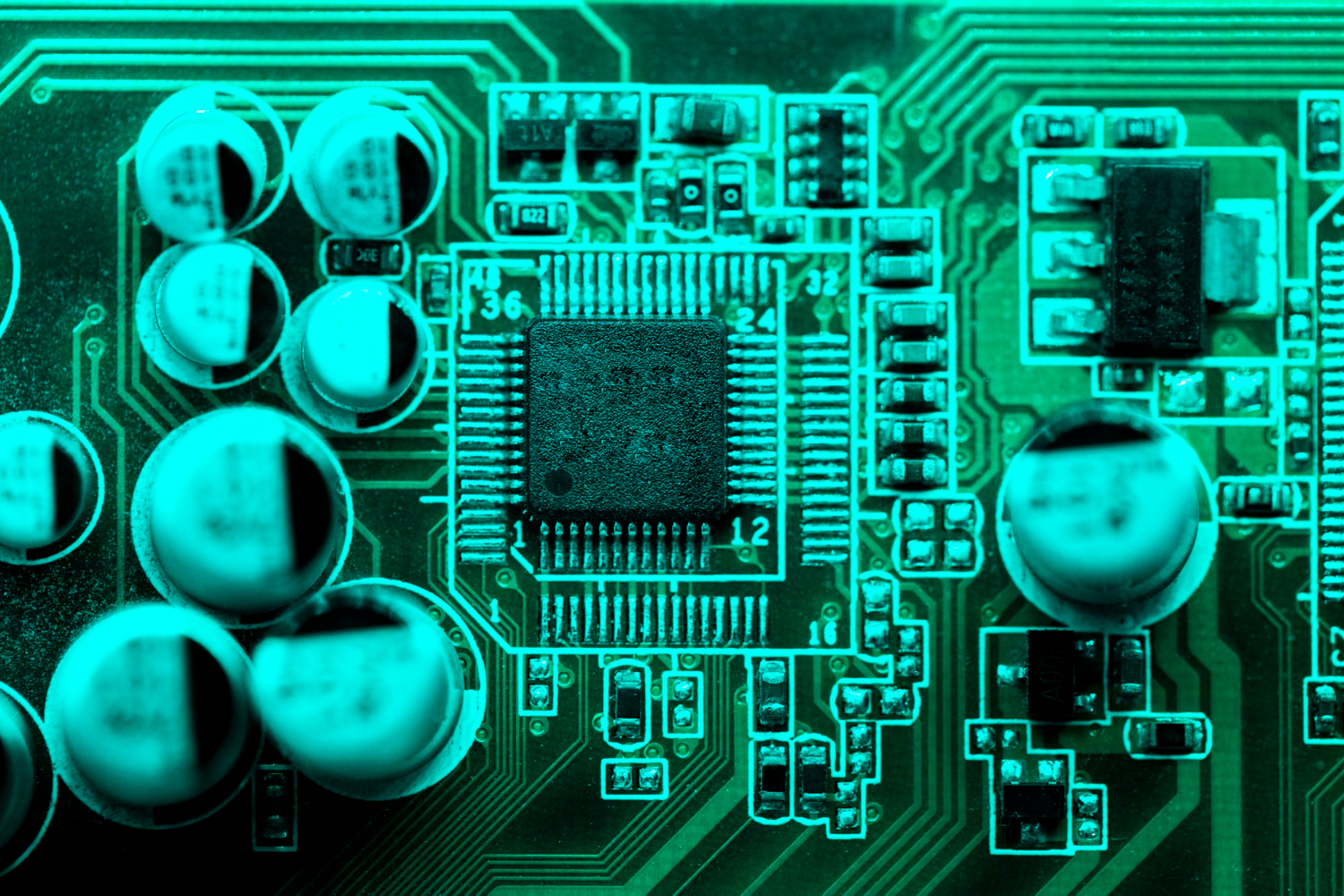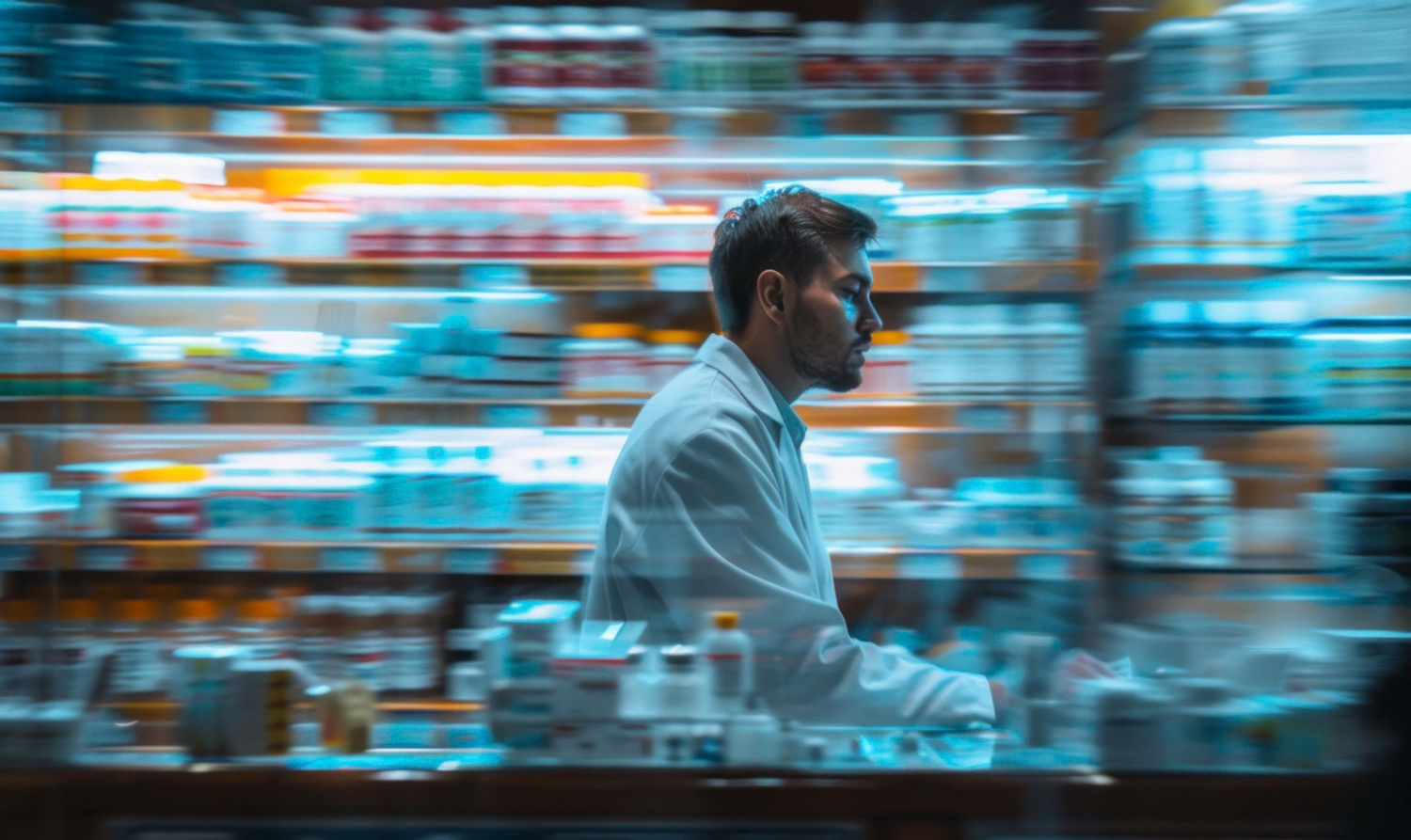In the era of AI in fashion & beauty, each makeup brush stroke and every garment is infused with the power of artificial intelligence (AI), reshaping industries once thought immutable. In 2020, the global AI market in the fashion industry worth $270 million and is forecasted to hit $4.4 billion in 2027. Moreover, the makeup industry has seen an increase in the use of AI, with companies introducing AI-based solutions for personalised suggestions, virtual try-ons and trend forecasting.
In the past, forecasting trends were focused mainly on human intuition and historical analysis. However, AI can analyse a huge amount of data from social media platforms, runway shows, and consumer behaviour, which they then use to predict future trends with unsurpassed accuracy. This article will review how AI intelligent systems such as virtual try-ons, personalised recommendations and augmented reality (AR) apps are why customers are more satisfied and loyal.

Use Cases
Virtual Try-Ons and Makeup Simulation
The AI tech based virtual try-ons and makeup simulations enable customers to visualise how the object of their purchase will look on them. Thus, it gives them satisfaction and reduces the number of returns. To check the beauty products will fit their skin tone and face shape, Sephora reduced 35% returns related to shades that matched or the product’s appearance.
Let’s break down how the AI technologies are helping in this use case step by step:
- Facial Detection and Analysis
Once a user activates the virtual try-on feature, computer vision algorithms analyse the user’s facial features in real time. Computer vision acts like a smart camera that looks at your face. It can spot out different parts of your face like the lips, eyes, and skin colour. It helps a virtual makeup tool to understand where to put the make-up and how it should be on your face.
- Tone Matching and Product Recommendation
Once facial features are identified, generative AI algorithms analyse the user’s skin tone and texture. The Generative AI utilises machine learning generative models trained on large skin tones and makeup product datasets. Based on the user’s skin tone, these algorithms recommend makeup shades and products that match the user’s complexion, ensuring a customised and realistic virtual makeup experience.
- Virtual Makeup Application
After a skin analysis, virtual makeup is applied to the user’s face in real life. Computer vision algorithms precisely overlay virtual makeup onto the user’s facial features. Then, Generative AI algorithms generate realistic simulations of makeup application on the user’s face. These algorithms consider lighting conditions, skin texture, and product descriptions to ensure virtual makeup looks natural.
- Real-Time Rendering and Performance
Throughout the virtual try-on process, GPU Acceleration renders smooth virtual makeup and facial features in real life. GPU enhances the speed and performance of virtual try-on platforms by offloading computational tasks to specialised graphics processing units. This real-time rendering of virtual makeup is done smoothly without consuming much processing power.
- Immersive Visualisation (AR/VR/XR)
While the user interacts with the virtual try-on feature, AR/VR/MR/XR technologies produce the surrounding environment, which is immersive and interactive. Augmented reality (AR) transposes virtual makeup to the user’s face in real time and allows seeing the result from different perspectives. VR/XR technologies improve immersion by availing users with a 360-degree perspective of virtual shades of makeup items to look as if they indeed are handling real items.
L’Oréal’s makeup application demonstrates the fusion of AI in fashion and customer experiences. It utilises cutting-edge computer vision and AR technology to allow users to try out different makeup products virtually in real time, from lipstick shades to eyeshadows. The generative AI guarantees that the virtual makeup looks natural and genuine on the user’s face, and the GPU acceleration ensures fast processing for a smooth and seamless experience.
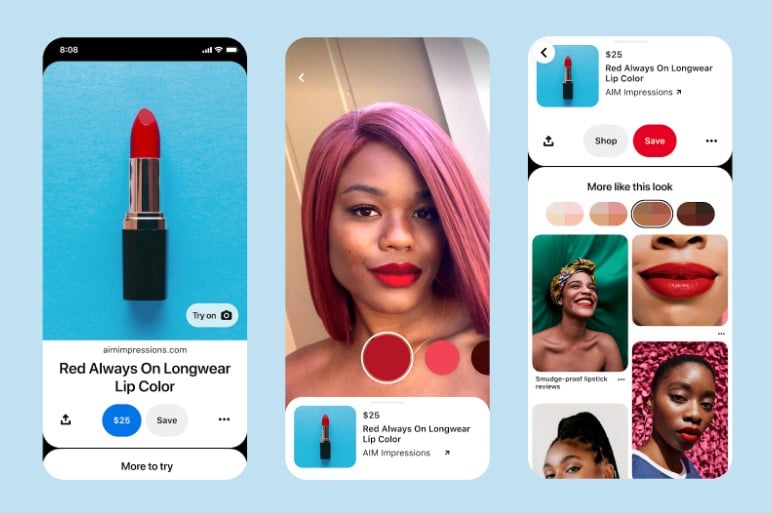
Personalised Fashion Recommendations
Imagine having your personal stylist who knows exactly what you like and what looks best on you. That’s what personalised fashion recommendations do- thanks to AI algorithms that analyse your past purchases, what you browse online and even your feedback and reviews to determine your style preferences. Let’s review how AI technology is helping step by step:
- Understanding Customer Preferences with NLP:
When a customer interacts with the platform or provides feedback, it is analysed by Natural Language Processing (NLP) algorithms to understand customer preferences expressed through feedback, reviews, or style descriptions. The algorithms extract relevant information like preferred styles, colours, or brands, which serves as a valuable asset for generating personalised recommendations.
- Personalised Recommendations through Generative AI:
Based on the extracted customer data, such as style preferences, size, budget constraints, and current fashion trends, the generative AI algorithms come up with suggestions specifically for you. Generative AI ensures the recommendations cover a wide range of styles, so there’s something for everyone. The AI considers what’s currently popular and available in your size and budget.
- Optimised Performance with GPU Acceleration:
Throughout the recommendation generation process, GPU acceleration optimises the performance of AI algorithms, ensuring fast processing and real-time recommendation generation, even with large datasets. This ensures that customers receive personalised suggestions promptly, enhancing their overall experience and engagement with the platform.
- Data Processing with IoT Edge Computing:
IoT brings computational power to where data is generated, such as on a customer’s device or a nearby network device. Think of a fitness-tracking device that tracks your daily activities. Instead of sending all the data it collects to a remote server for analysis, IoT edge computing enables the tracker to process and analyse the data either on itself or a nearby device connected to the same network.
When a customer interacts with an online fashion retailer platform via browsing products, providing feedback, or making purchases, data about these interactions is collected. With IoT edge computing, this data can be instantly analysed, right where it’s collected, without waiting for it to be sent to a central server for processing. This real-time analysis allows the fashion retailer platform to respond quickly to customer actions and provide personalised recommendations at the moment.
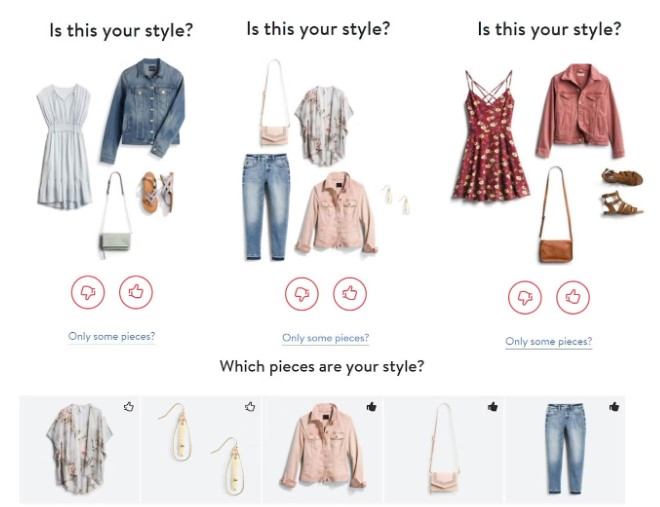
Trend Forecasting and Design Inspiration
Have you ever wondered why fashion designers are aware of what will be trendy next season? With the help of AI technology in forecasting trends and inspiring designs, fashion designers will always be on top of the game, creating collections that speak with consumers. This will help them understand their customers and get the inspiration to design something new and refreshing.
AI scans millions of posts and conversations on social media to see what people are discussing. AI searches for hashtags that include fashion trends, popular styles or new looks people love. AI is also tracking the fashion shows and runway events for the latest designs. Through AI fashion week analysis, algorithms can identify what styles are emerging and what will be the dominant trends in future.
Let’s break down how each AI technology contributes to the process of trend forecasting and design inspiration step by step:
- Trend Analysis with Data Analytics:
The process starts with collecting and analysing different data from sources like fashion trends on social media, runway shows, historical sales data, and fashion publications. Algorithms of data analytics go through this information to discover patterns, connections and emerging tendencies. They offer invaluable information on consumers’ tastes, market trends, and popular styles, which serve as a basis for trend forecasting and inspiration for design.
- Text Analysis for Consumer Insights with NLP:
NLP algorithms analyse text-based data like fashion-related content, customer feedback, reviews, and social media conversations. NLP extracts valuable insights from textual data, providing a deeper understanding of consumer sentiment, preferences, and trends. It helps identify emerging themes, popular brands, key influencers, and consumer perceptions, which inform trend forecasting & design inspiration.
- Innovative Design Ideas with Generative AI:
Based on information gathered from data analytics & NLP, generative AI starts by learning from all data gathered about fashion trends, consumer preferences and styles. It analyses this information to understand what’s popular and what people like. Once it understands trends and preferences, generative AI produces new ideas for fashion designers and beauty brands, fostering innovation and creativity in the design process.
- Enhanced Processing Speed with GPU Acceleration:
When computers analyse fashion trends and consumer preferences, they handle vast amounts of data. GPU acceleration helps them do this faster by using special graphics processors, good at processing large datasets swiftly. Once trained, these AI models swiftly generate design concepts based on learned patterns, with GPU acceleration ensuring prompt delivery of new ideas and inspirations to fashion professionals.

Customised Fit and Tailoring
Ever wished your clothes fit perfectly without needing to try them on? With the help of some smart technology, that dream is becoming a reality! AI technologies enable precise measurement of body dimensions, personalised fit recommendations, and tailored design solutions, enhancing customer satisfaction and reducing returns. Let’s see how AI technology contributes to the process step by step:
- Virtual Fitting Room Experience with Computer Vision:
Imagine you are in a virtual fitting room equipped with computer vision technologies allowing your body measurements to be captured without needing to try on any clothes. Computer vision captures videos or images of your body, and its algorithms process them to get the analysis. It can accurately measure all the standard dimensions - the chest, waist, hips, and sleeve length- just like a tailor doing his measurements with a measuring tape.
- Local Data Processing with IoT Edge Computing:
Once your body measurements are captured, IoT edge computing processes this data locally, right where it’s collected. This information doesn’t have to traverse long distances to be analysed, making the process faster and more responsive. With IoT computing, you get instant feedback and personalised fit recommendations. This means you can see how clothes will fit you immediately, without delays or waiting around.
- Personalised Designs with Generative AI:
Once it has your body measurements and style preferences, generative AI creates custom patterns and designs just for you. It uses its creativity to come up with something that fits your body shape and matches your taste. The AI analyses your measurements and preferences to ensure that the designs it creates are unique to you, enhancing the customisation aspect of the tailoring process.
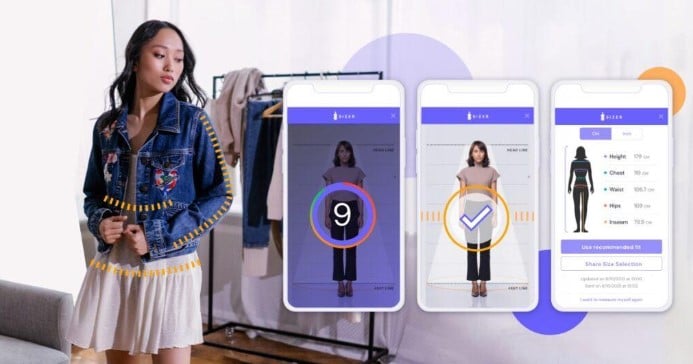
Fashion Image Recognition and Tagging:
Have you spotted a clothing item online and wondered where to find something similar? AI analyses images of clothing and accessories, tagging the metadata like clothing types and colours with AI. Pinterest Lens, an AI powered image recognition tool, lets people find similar dresses and accessories by just uploading or taking a photo. Also, fashion trends and style discovery become much easier, making online shopping more fun and user-friendly.
Here’s a step-by-step breakdown of how AI technologies are helping fashion image recognition and tagging:
- Image Recognition with Computer Vision:
Imagine a pair of shoes you see in a magazine and want to find something very similar. You may take a picture with your phone, Computer Vision technology will analyse the image to identify shoes and suggest similar ones. The algorithms identify visual aspects like dress types, clothing colours, patterns, and styles in the image, whether it’s a dress, shirt, shoes, or accessories. It will provide you with an ample choice of styles and trends that match your taste, thus making the shopping experience enjoyable and convenient.
- Textual Analysis with Natural Language Processing (NLP):
While computer vision is busy analysing the image, NLP algorithms are reading any kind of text that goes along with it, like captions or descriptions. NLP interprets the textual information, extracting relevant metadata like clothing brands, styles, materials, and user comments. This textual analysis provides additional context and information about the fashion item, enhancing the accuracy and richness of the tagging process.
- Tagging and Metadata Generation:
Based on image recognition and textual analysis results, the system generates relevant metadata tags for the fashion image. By combining the insights from computer vision and NLP technologies, the system assigns descriptive tags to the image, including details about the clothing items, colours, patterns, brands, and styles depicted. These tags serve as valuable metadata that enables efficient cataloguing and organisation of fashion images within the platform.
- Search and Discovery:
Users interact with the platform to search for specific fashion items or discover new trends. When users input search queries or browse through image collections, the system leverages the AI-generated metadata tags to deliver relevant and accurate search results. This allows users to easily find desired fashion items, explore related styles, and discover new trends based on their preferences and interests.
- Feedback and Iteration:
As people interact with the system and provide feedback, by clicking on search results or leaving comments, the system learns from these interactions. With machine learning techniques, the system continues improving its algorithms as it learns from user behaviour, needs and engagement patterns. The system gets better at recognizing fashion generated images and tagging them accurately. This means you get more relevant search results when looking for clothes and accessories online.
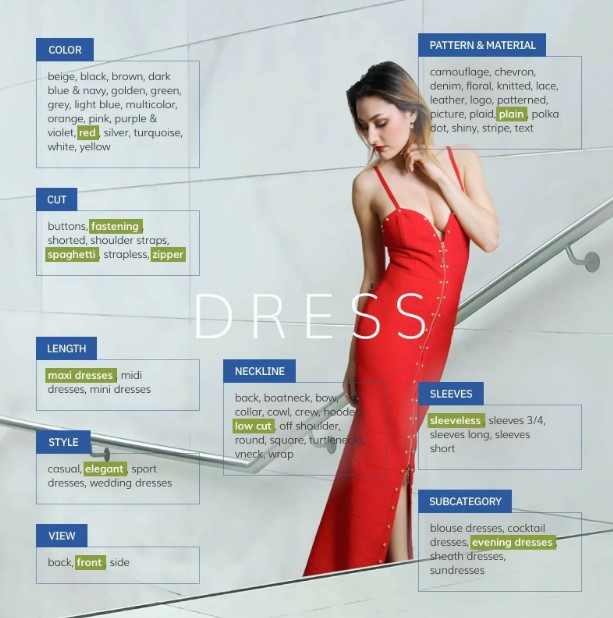
Challenges:
Integrating AI into the fashion and beauty industry presents some challenges businesses have to deal with to fully maximise the benefits of these technologies. These include:
- Data Privacy Concerns and Regulatory Compliance:
Processing large quantities of sensitive customer information involves data protection and regulatory compliance issues, such as GDPR (General Data Protection Regulation). Firms have to comply with data protection laws and regulations to maintain customer privacy and prevent potential legal claims.
- Integration Challenges with Existing Systems and Processes:
Integrating AI technologies with existing systems and processes is usually intricate and demanding, using large resources and knowledge. Businesses need to overcome the integration challenges of AI solutions so that it can work cohesively together with the existing infrastructure, thereby reducing interruptions and enhancing productivity.
- Skills Gap and Workforce Readiness:
The constant development of AI technologies will create a need for skills and competence in the fashion and make-up industries that might not be available. Companies should invest in workforce training and upskilling so that the staff has the right knowledge and skills needed to apply AI technologies appropriately.
- Use Case-Specific Challenges:
The development of precise virtual try-ons or tailored recommendations involves unique issues, mainly related to the resolution of produced images, the data quality, and the models’ accuracy and complexity. Delivering a smooth customer journey is about overcoming technical barriers and improving AI algorithms to provide personalised and tailored results.
What Can TechnoLynx Offer You as a Software Company?
At TechnoLynx, we pride ourselves on offering custom AI solutions that specifically address the needs and challenges of the fashion and makeup industries. Our expertise in Computer Vision, Generative AI, GPU acceleration, IoT edge computing, and NLP technologies allows us to develop customised solutions that fuel innovation, improve customer experience, and increase business value.
We offer solutions that make virtual try-on experiences more engaging, personalise fashion recommendations, and facilitate applications like facial recognition, product detection, and image analysis. Whether conceptualising or implementing, our team collaborates closely with clients and develops AI-driven solutions tailored to meet their needs and deliver results.
From being a fashion retailer to a cosmetics brand, we are with you from beginning to end, providing you all the support and guidance you need. With TechnoLynx as your partner, you can access our latest AI technology and innovation to stay ahead of your competition, opening up new growth opportunities.
Final Thoughts
In conclusion, AI can stimulate creativity in many aspects of the fashion and makeup industries, from designing and developing new products and marketing activities to customer relationships. Organisations can extract maximum benefits from AI through their growth, differentiation, and superior value delivery to customers. We encourage businesses to use AI-powered solutions to stay competitive in these dynamic markets. Work with TechnoLynx to embark on your AI expedition and get a new outlook for success. As a team, we are committed to driving innovation, enhancing consumer experiences, and shaping the future of these vibrant sectors. Contact us today to discover how AI can transform your business and drive growth.
References
- Deloitte (2019). The Deloitte Consumer Review Made-to-order: The rise of mass personalisation. [online] Deloitte.
- IBM Newsroom. (n.d.). Data Suggests Growth in Enterprise Adoption of AI is Due to Widespread Deployment by Early Adopters, [online].
- pwc (2018). PwC’s Global Artificial Intelligence Study: Sizing the prize. [online] PwC.
- Salesforce.com. (n.d.). It’s Personal, and It’s Business: Using Retail Personalization to Connect with Customers, [online].
- Salesglimpsegroup.com. (n.d.). Sephora Increases Online Make-up Sales by 35% with Virtual Try-on Experience, [online].
- Statista. (n.d.). Artificial intelligence in the global fashion market value 2027, [online].

